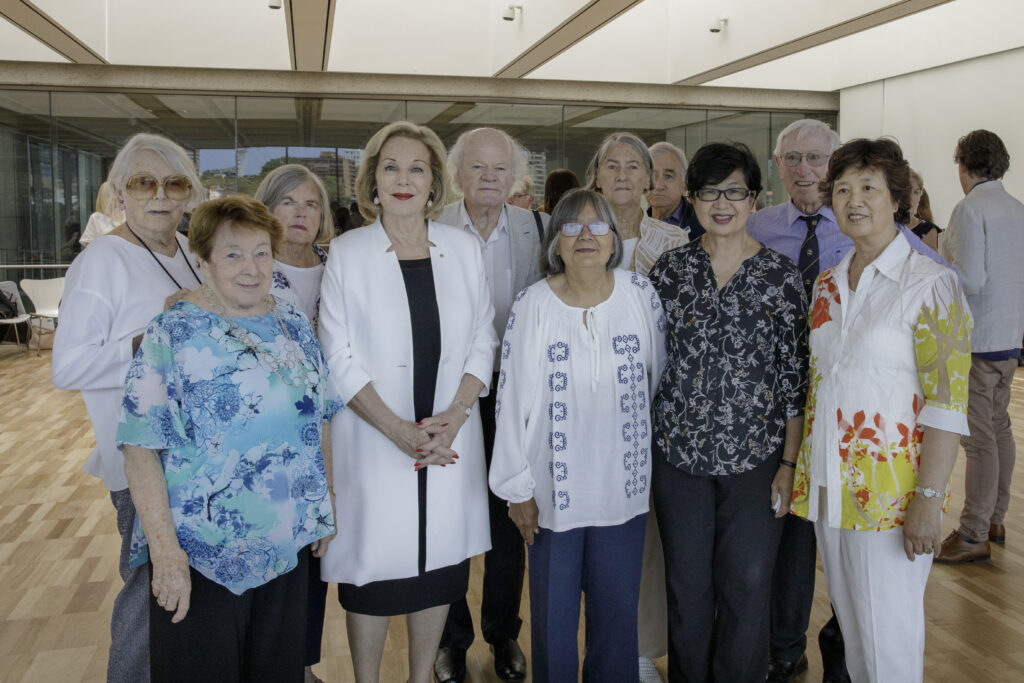On 4 May 2001, Dr Paul Beaumont AM and Professor Paul Mitchell AO, founded the Macular Degeneration Foundation with a simple mission: to develop a patient-centric, independent and trusted organisation for those living with or at risk of macular degeneration.
In 2013, the Foundation was renamed Macular Disease Foundation Australia (MDFA) to ensure every person diagnosed with a macular condition was supported and represented by our Foundation. This includes people at all stages of age-related macular degeneration (AMD), people with diabetes-related eye conditions, inherited retinal diseases and other macular conditions.
As we prepare to mark our 25th anniversary, we’re reflecting on the journey so far – and the incredible community that made it possible.
25 years of progress, powered by community
Today, MDFA is the trusted voice of the macular disease community, helping people and families feel informed, supported and more in control of their eye health.
This milestone belongs to all of us – every person diagnosed with macular disease, every carer, supporter, donor, volunteer, researcher, eye health professional and advocate who has stood with us. It reflects 25 years of shared commitment to fight for sight, and the courage of people who care deeply about reducing its impact.
As Patron, I have witnessed the Foundation’s significant progress – built on compassion, vision and determination. In this 25th year, we celebrate not only what has been achieved, but the countless lives touched and the brighter future we are creating together.
Ita Buttrose AC OBE, Patron

New initiatives announced to celebrate
our silver jubilee
MDFA 25th Anniversary Research Award
We’ve launched a $200,000 research investment into geographic atrophy – the late-stage dry form of AMD. Read more.
Elisabeth Macdonald Memorial Award
A new research award focusing on AMD’s impact in rural and regional communities – a fitting legacy from our dear friend, Elisabeth. Read more.
Expanding our free Eye Connect support service
We’re expanding our free Eye Connect service to support people living with a diabetic-related eye condition.
Of the 1.5 million Australians diagnosed with diabetes, between 25% to 35% of people have some degree of diabetic retinopathy.1,2 Among them, an estimated 91,000 are living with diabetic macular oedema, a complication of diabetic retinopathy. These conditions are the leading cause of preventable blindness among working-age Australians.
With an initial focus on AMD, Eye Connect now supports people living with:
- Diabetic retinopathy
- Diabetic macular oedema
This expansion makes Eye Connect Australia’s first national service dedicated to providing tailored information, practical advice, and emotional support for those affected by these conditions. Read more.
Take our new Eye Connect Check, an easy six-question check, to see if the service will benefit you.
I often had questions after I left the clinic, so I joined Eye Connect for support in between appointments. They listened to my emotions, and they listen to my questions and give me answers. And I always come away feeling calmer because I’ve felt heard and understood.
Sue, Eye Connect participant
Help us reach our $1 million goal
To celebrate 25 years of impact, we’ve set an ambitious goal: to raise $1 million to expand research and support services for people living with macular disease.
We can’t do this without you.
If you can give a special 25th Anniversary gift over the next year, your generosity will help change the lives for many in our community.
Every gift counts. Help us reach our $1 million goal and change lives.
References
1. National Health and Medical Research Council (2008). Guidelines for the management of diabetic retinopathy.
2. S. Keel, J. Xie, J. Foreman, P. van Wijngaarden, H.R. Taylor, M. Dirani. The prevalence of diabetic retinopathy in Australian adults with self-reported diabetes: the National Eye Health Survey. Ophthalmology, 124 (7) (2017), pp. 977-984.
3. 91,000 DMO number is an extrapolation from this source: Deloitte Access Economics (2015). The Economic Impact of Diabetic Macular Oedema in Australia. Canberra: Deloitte Access Economics, Barton, ACT.















